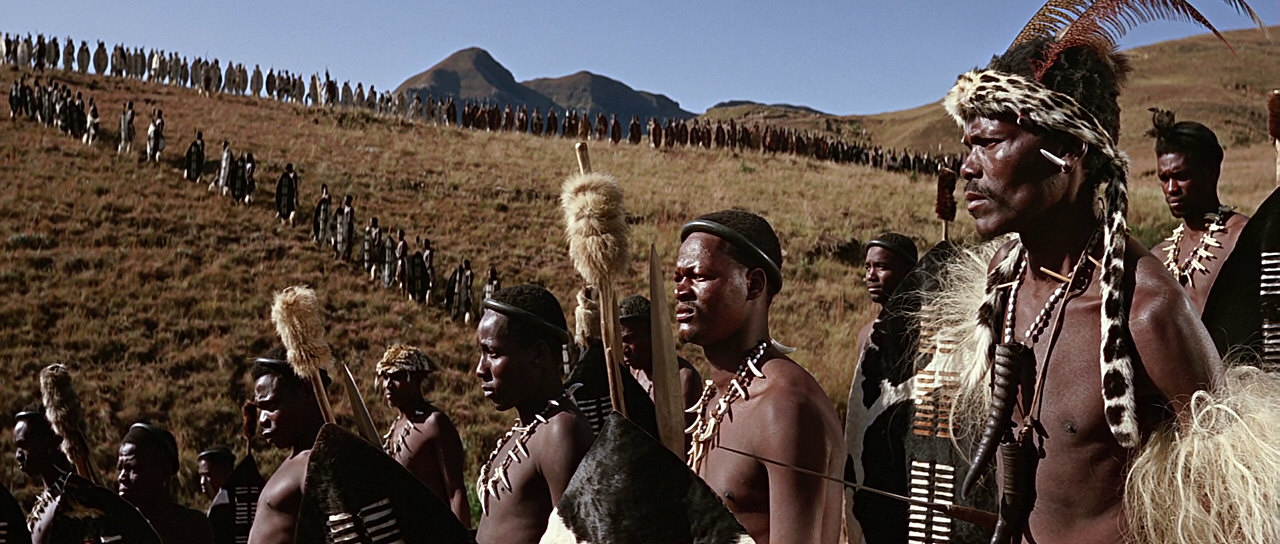-large-picture.jpg) |
| DVD Release of the movie 1964 Poster |
"Zulu is a 1964 epic war film depicting the Battle of Rorke's Drift between the British Army and the Zulus in January 1879, during the Anglo-Zulu War. It depicts 150 British soldiers, many of whom were sick and wounded patients in a field hospital, who successfully held off a force of 4,000 Zulu warriors." (wikipedia)
This remarkable movie was the starting point of the illustrious movie career of Michael Caine (born 1933) and pictures of him as Lieutenant Gonville Bromhead of the 24th Regiment of Foot fill the posters. On the other hand, the main star Stainley Baker (1928-1976) did not get similar attention from the critics nor from the viewers for his acting as Lieutenant John Chard in charge of the force located in the missionary center.
 |
| Filmed in majestic nature of Natal Image Torrents |
However, neither Caine nor Baker make this film so remarkable. The cinematography does justice to the majestic scenes in Natal beneath the natural Amphitheatre in the Drakensberg Mountains. Nature is not a backdrop but rather a breathtaking fundamental element that largely makes this movie so memorable.
The honest way in which the many different characters among regiment's men are depicted seems bold and realistic with no "American" style idealization of them as war heroes. Together they are a very convincing bunch of men, some less some more prone to killing, some getting literally sick from the bloodshed. Army discipline can be broken - and is broken - but at the end it is the excellent discipline that makes the winning tactics possible.
The tactic is shown without elaboration: these rifle men acted in line formation like the British soldiers in Waterloo against Napoleon and others long ago: several lines standing in depth, men in each line shooting in concert and then bowing down to reload the rifle while the next line aims and shoots on the enemy at close quarters. Nobody run from the very threatening stand and slowly but surely the massive rifle fire wiped out the attackers relying on hand weapons in close up encounter. The short spears and paper thin shields were useless.
The tactic arranging rifle men for such a massive fire was a predecessor to the murderous use of first Maxwell machine guns not much later that devastated so many attacking men and horses in the Mahdi revolt in Sudan.
 |
| Zulu (1964) Image Jonathan Rosenbaum |
Despite of their loss the Zulu warriors gain viewers respect for their smartness and bravery. The tragedy for them was to face new weapons carrying old ones. We can assume that had the Zulu soldiers used a bit better the many rifles they had captured they would have destroyed the small fort and killed all its defenders in a matter of hours or less.
This close encounter between past and present weaponry is one of the messages this great movie underlines. Similar encounters have happened elsewhere between old and new, for example when Polish officers foolishly sent their bravest cavalry against attacking German tanks in 1938/39.
One thing about this movie made me sad, the unfair mockery of the Swedish missionary Witts and his daughter. Because these are real persons it is in my mind unforgivable blackening of the memory of these very decent Christians (see Wikipedia for details).. Was this the producers' idea of comic relief?

No comments:
Post a Comment